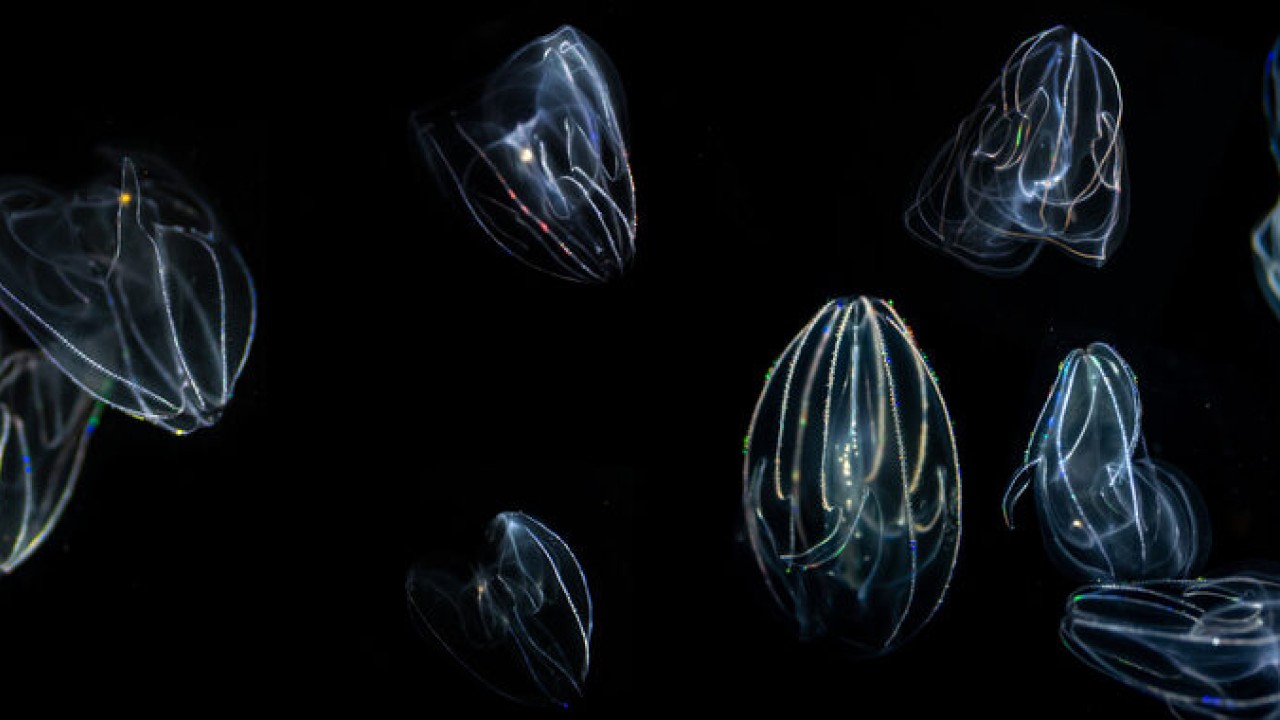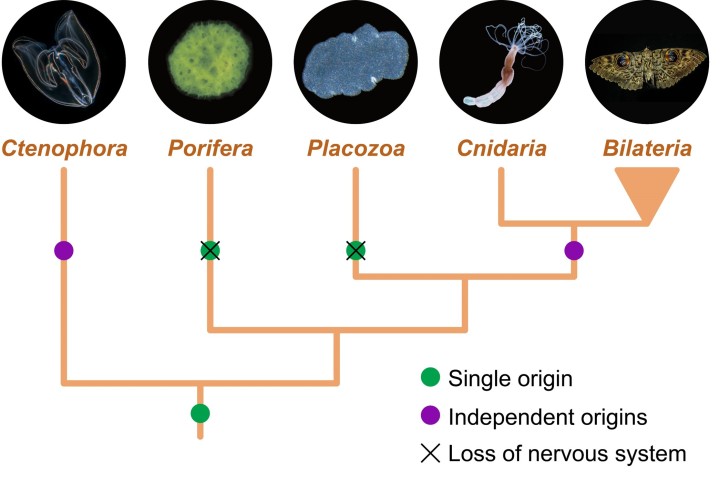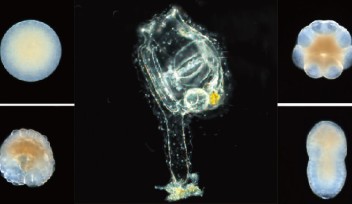Into the brain of comb jellies: scientists explore the evolution of neurons

Neurons, the specialized cells of the nervous system, are possibly the most complicated cell type ever to have evolved. In humans, these cells are capable of processing and transmitting vast sums of information. But how such complicated cells first came about remains a long-standing debate.
Now, scientists in Japan have revealed the type of messenger —molecules that carry signals from one cell to another —that likely functioned in the most ancestral nervous system.
The study, published 8th August in Nature Ecology & Evolution, also revealed key similarities between the nervous system of two early-diverging animal lineages – the lineage of jellyfish and anemones (also called cnidarians) and that of comb jellies (ctenophores), reigniting an earlier hypothesis that neurons only evolved once.
Despite their supposed simplicity, very little is known about the nervous system of ancient animals. Out of the four animal lineages that branched off before the rise of more complex animals, only comb jellies (the first ancient lineage to diverge) and cnidarians (the last ancient lineage to diverge) are known to possess neurons. But the uniqueness of the comb jellies nervous system compared to that seen in cnidarians and more complex animals, and the absence of neurons in the two lineages that diverged in between, led some scientists to hypothesize that neurons evolved twice.

But Professor Hiroshi Watanabe, who leads the Evolutionary Neurobiology Unit at the Okinawa Institute of Science and Technology (OIST), remained unconvinced.
“Indeed, comb jellies lack a lot of neural proteins that we see in more evolved animal lineages,” he said. “But for me, a lack of these proteins isn’t enough evidence for two independent neuron origins.”
In his study, Prof. Watanabe focused on an ancient and diverse group of neural messengers. Called neuropeptides, these short peptide chains are first synthesized in neurons as a long peptide chain, before being cleaved by digestive enzymes into many short peptides. They are the major form of messenger found in cnidarians, and also play a role in neural communication in humans, and other complex animals.
However, past research that has attempted to find similar neuropeptides in comb jellies has been unsuccessful. The main problem, explained Prof. Watanabe, is that the mature short peptides are encoded by only short sequences of DNA, and mutate frequently in these ancient lineages, making DNA comparisons too difficult. While artificial intelligence has identified potential peptides, these have not yet been experimentally validated.
So, Prof. Watanabe’s research team approached the problem from a new direction. They extracted peptides from sponges, cnidarians and comb jellies and used mass spectrometry to search for short peptides. The team was able to find 28 short peptides in cnidarians and comb jellies and determine their amino acid sequences.
Now knowing their structures, the researchers visualized the short peptides under a fluorescent microscope, allowing them to see which cells they were produced in in both cnidarians and comb jellies.
In comb jellies, they found that one type of neuropeptide-expressing cell looked similar to classic neurons, with thin projections called neurites extending out from the cell.
But the short peptides were also produced in a second type of cell that lacked neurites. The researchers suspect these could be an early version of neuroendocrine cells – cells which receive signals from neurons and then release signals, like hormones, to other organs in the body.
The researchers also compared what genes were expressed in cnidarian and comb jelly neurons. They found that as well as having some short neuropeptides in common, both neurons also expressed a similar array of other proteins essential for neuronal function.
“We already know that cnidarian peptide-expressing neurons are homologous to those seen in more complex animals. Now, comb jelly neurons have also been found to have a similar “genetic signature”, suggesting that these neurons share the same evolutionary origin,” said Prof. Watanabe. “In other words, it’s most likely that neurons only evolved once.”
This means, added Prof. Watanabe, that peptide-expressing neurons are probably the most ancestral form, with chemical neurotransmitters arising later.
For Prof. Watanabe, these findings bring new, exciting questions to the forefront of his research.
“If this is true, I’m most interested to know - where did the peptide-expressing neurons come from? And why did the ancestral animal need to evolve neurons? Now that we have a clearer idea of what the earliest neurons looked like, research into their original function can begin.”
Article Information
Specialties
Research Unit
For press enquiries:
Press Inquiry Form














